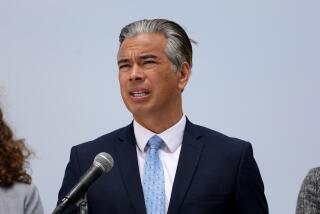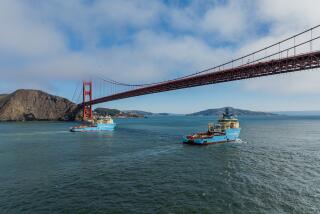Short-Change Artists
- Share via
There is something almost pathetic in the toil of workers along the coast of Prince William Sound, going literally from rock to rock to wipe up the crude oil residue from the Exxon Valdez spill of four months ago. How many millions of rocks have been blighted? But hand to rock, rock by rock--that is just about the only way the mess can be expunged. While the Alaskan coast might be stained for years in spite of the effort, the nation owes it to itself to do everything possible now to restore the magnificent environment to something of its natural state.
Thus the arrogance of Exxon Corp. officials makes a mockery of the labors of 10,000 men and women in cleanup support centers and strung out along the coast of Prince William Sound. Never mind that Exxon is paying them $18 an hour for their work. Many did go to Alaska for the bucks-- not that this is easy work by any measure. Many went because they were appalled by this environmental disaster and wanted to play some part in wiping out the stain.
From the beginning, Exxon declared it would stick with the job until it was done, no matter the cost. But now the world’s largest energy company says it will halt work Sept. 15. When spring comes, Exxon says its only commitment is to “survey” the situation. This position is not negotiable, the company said. That means that if the state and federal governments don’t like it, tough.
Perhaps Exxon is rocked by the cost. Indeed, the memo was disclosed on the same day the firm announced it has already spent $600 million on the Exxon Valdez affair, will pay out another $250 million and has an additional $400 million billed to insurance carriers. The figures were met with some skepticism by experts, but even if the outlay is that high, Exxon still expects to make $160 million in profit during the second quarter of 1989. The summary did not cover contingency funds to offset any liability that may emerge from lawsuits that have been filed. But it also does not consider aesthetic damage to the environment and the loss of wildlife, which includes 28,000 birds and 800 sea otters counted to date.
The hand work obviously cannot go on during the winter, but it should continue beyond Sept. 15 if weather permits. Alaskan officials say pollution has been removed from less than 25% of the 730 miles of shoreline Exxon promised to clean up. Winter storms indeed may scour some of the goo from the beaches, but no one can be sure. If it is practical to do more cleanup work next spring, Exxon should have crews on the beaches the minute the weather allows.
Secretary of the Interior Manuel Lujan Jr. is correct when he says Exxon is responsible for full cleanup and mitigation of damages. The notion that Exxon should just walk away from the fouled Alaskan beaches is unacceptable. The disdain with which it declared its intent is base. If Exxon will not take Lujan’s word for the government’s determination that Exxon finish cleaning up its mess, President Bush should get on the telephone and emphasize the message in the sort of language that oilmen understand.
More to Read
Sign up for Essential California
The most important California stories and recommendations in your inbox every morning.
You may occasionally receive promotional content from the Los Angeles Times.













